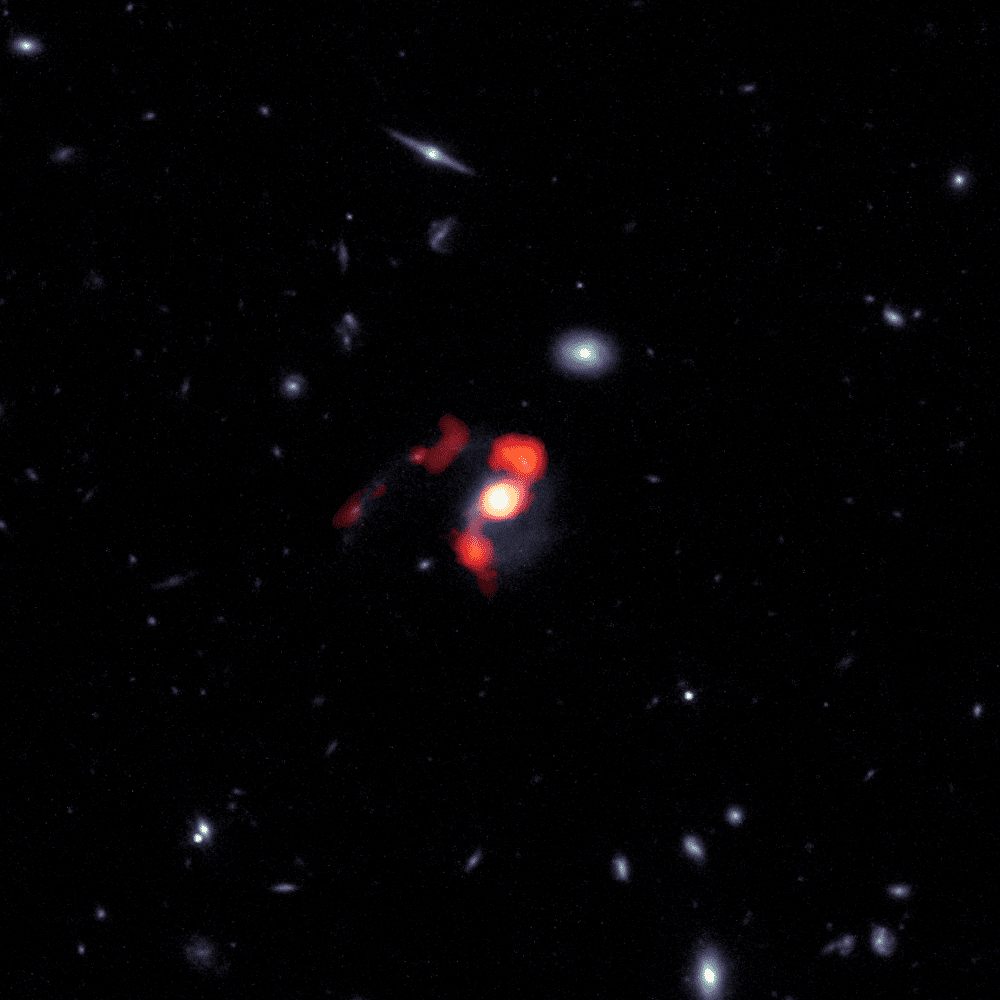When galaxies collide, they usually end up producing a great number of new stars as their gas reservoir gets compressed by the gravitational forces between the merging bodies. But it turns out that sometimes the opposite can be the case. Astronomers report the discovery of a pair of merging galaxies that have spelled their own demise by coming together.
Published in The Astrophysical Journal Letters, and based on observations from Hubble and the Atacama Large Millimeter/submillimeter Array (ALMA), the team found galaxy SDSS J1448+1010, which is in the process of completing its merger. But they were surprised to discover that vast quantities of gas, weighing 10 billion times our Sun, have been thrown out of the galaxy.
“What initially made this massive galaxy interesting was that, for some reason, it suddenly stopped forming stars about 70 million years ago immediately following a burst of star-forming activity. Most galaxies are happy to just keep forming stars,” lead author Justin Spilker, an astronomer at Texas A&M University, explained.
“Our observations with ALMA and Hubble proved that the real reason the galaxy stopped forming stars is that the merger process ejected about half the gas fuel for star formation into intergalactic space. With no fuel, the galaxy couldn’t keep forming stars.”
The discovery is a peculiarity. The current view is that the formation of new stars wanes at the end of the merging process when the increased rate of supernovae (from all the new stars formed), and possibly supermassive black holes becoming active, leads to the production of galaxy-size winds that heat and spread out the gas.
“Astronomers used to think that the only way to make galaxies stop forming stars was through really violent, fast processes, like a bunch of supernovae exploding in the galaxy to blow most of the gas out of the galaxy and heat up the rest. Our new observations show that it doesn’t take a ‘flashy’ process to cut off star formation. The much slower merging process can also put an end to star formation and galaxies,” Spilker said.

Observations of galaxy SDSS J1448+1010 by Hubble and ALMA. Image Credit: ALMA (ESO/NAOJ/NRAO), J. Spilker et al (Texas A&M), S. Dagnello (NRAO/AUI/NSF)
The question now is how common this process is. This might be an extremely rare case or there could be plenty of other examples out there waiting to be found.
“While it’s pretty clear from this system that cold gas really can end up way outside of a merger system that shuts off a galaxy, the sample size of one galaxy tells us very little about how common this process is,” said co-author David Setton, a graduate student in the department of physics and astronomy at the University of Pittsburgh.
“But, there are many galaxies out there like J1448+1010 that we’re able to catch right in the middle of those crashes and study exactly what happens to them when they go through that stage. The ejection of cold gas is an exciting new piece of the quiescence puzzle, and we’re excited to try to find more examples of this.”
Merging events are key stages of galaxy evolution but there is still a lot more that we need to discover about them.
“When we look out at the Universe, we see some galaxies that are actively forming new stars, like our own Milky Way, and some that aren’t. But those ‘dead’ galaxies have many old stars in them, so they must have formed all of those stars at some point and then stopped making new ones,” added co-author Wren Suess, a cosmology fellow at the University of California Santa Cruz.
“We still don’t yet understand all of the processes that make galaxies stop forming stars, but this discovery shows just how powerful these major galaxy mergers are, and how much they can affect how a galaxy grows and changes over time.”
Source Link: Cosmic Tug-Of-War Leaves Merging Galaxies Gasping For Fuel